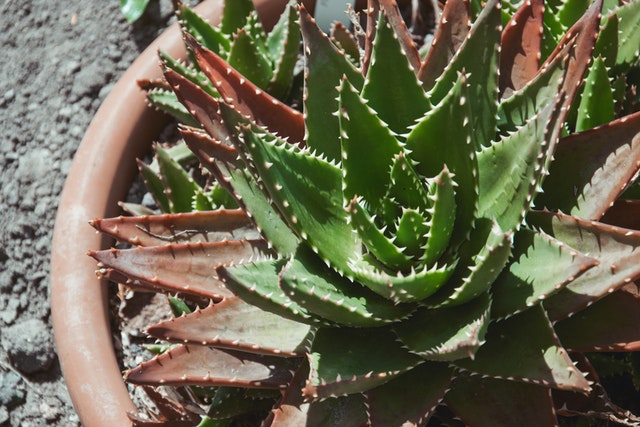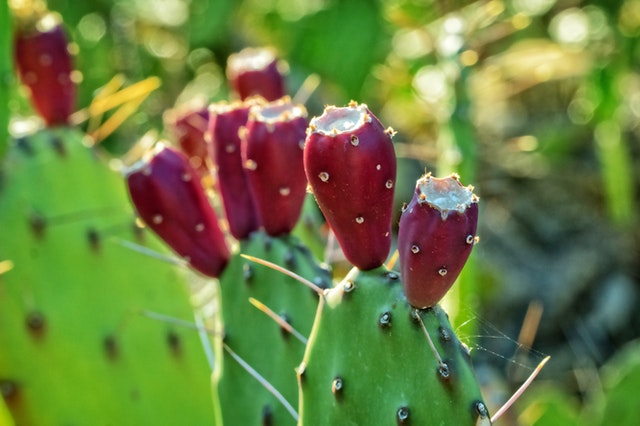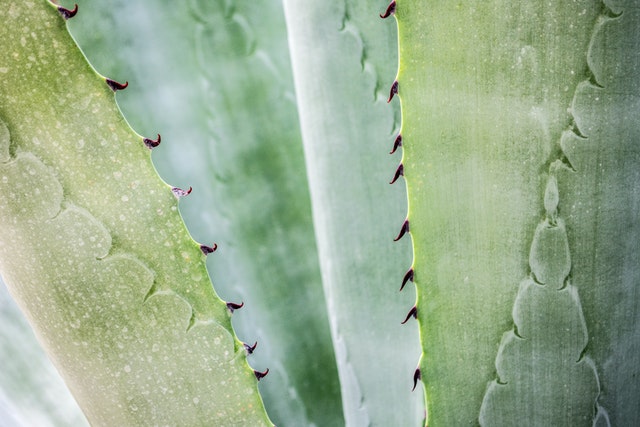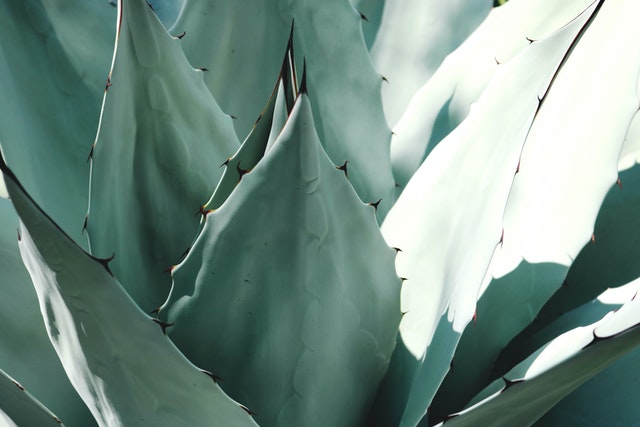Cacti are one of the easiest plants to care for. They require very little care, aren’t fussy, and won’t die if you forget to water them. All they need is a lot of sun and well-draining soil.
However, etiolated cactus – a condition mostly affecting indoor cacti and succulents that don’t receive enough sunlight – is one of the most common problems of cactus maintenance. An etiolated cactus can be spotted by its long, skinny, or curled stems and discoloration.
Despite their simple needs, cacti can still suffer from etiolation if not provided with sufficient sunlight. Cactus etiolation is caused by insufficient sunlight and can only be treated by placing your cactus into a spot with better lighting. The long, skinny stems are a side effect of the cactus stretching toward the sun.
In the rest of this article, we will cover how to recognize the signs that your cactus is becoming etiolated, how to fix the problem, and how to prevent it. We will also be answering some common questions regarding etiolation and proper cactus care.
What is Etiolated Cactus

Etiolation is a common problem that primarily plagues indoor cacti and succulents. It weakens the plants and makes them more susceptible to diseases such as stem rot or root rot.
While etiolation is much more common in cacti and succulents, it can affect all kinds of plants, especially houseplants, since insufficient lighting rarely occurs outdoors.
Because etiolation is caused by insufficient sunlight, etiolated cacti develop small and curled stems or long, skinny stems that seem to be reaching towards the light. The lack of sunlight stunts their growth by inhibiting photosynthesis, causing discoloration.
What Causes Cactus Etiolation?
Etiolation is caused by insufficient sunlight. Poor soil quality and low humidity may also play a factor depending on the plant type, but lack of sunlight is the main culprit.
Plants need sunlight in order to undergo the complex process of photosynthesis, which is how they convert sunlight into nutrients that help them grow and remain healthy. As much as fertilizer can help plants gain extra nutrients, their main food source is sunlight – and no amount of fertilizer can compensate for insufficient sunlight.
When a plant doesn’t have enough sunlight, they can’t undergo the process of photosynthesis, and therefore become weak, discolored, and lose their natural shape. Their limbs can curl up and grow stunted, or long and skinny as they seem to stretch towards the sun.
How Can I Tell if my Cactus is Etiolated?
Fortunately, an etiolated cactus is easy to spot. The main symptoms of etiolation are:
- Pale, weak, and elongated stems
- Stems bent in the direction of a light source
- Unusually small leaves
- Rapid and disproportionate growth
- Absent or small blooms
- Loss of leaves
- Root or stem rot
In this section, we’ll take a closer look at each of these symptoms.
1. Pale, weak, elongated stems
The most easily distinguishable sign that your plant isn’t getting enough sunlight is its pale, weak, and skinny stems. This happens during etiolation regardless of your cactus’s natural shape.
The color is usually pale yellow, a far cry from the plant’s natural vibrant green, and may even gain brown spots in severe cases. Weak stems will sometimes be limp, resting on the edge of the pot, or feel soft or squishy to the touch.
2. Stems bent in the direction of light source
When a plant lacks sufficient sunlight, it is a natural reaction for the limbs to grow in the direction of the nearest light source. The bend towards the light source is usually obvious and doesn’t reflect the cactus’s natural shape.
3. Unusually small leaves

If your cactus or succulent is one that typically has leaves, a sign of etiolation is the lack of full-size leaves. The leaves that do grow will be small, stunted, and spaced far apart.
4. Rapid, disproportionate growth
When dealing with an etiolated cactus, you’ll notice rapid growth of the long, skinny limbs. This is because the plant is trying to get as much sunlight as possible as soon as it can, which necessitates its rapid growth. This results in long, thin limbs that appear awkward and may imbalance your cactus.
5. Absent or small blooms
Flowering cacti need a lot of sunlight to produce blooms, so the lack of blooms altogether or small, infrequent blooms are a sign of an etiolated cactus.
6. Loss of leaves
While plants shed their old leaves quite frequently, an etiolated cactus or succulent will shed its leaves more than usual.
7. Root or stem rot
Insufficient sunlight results in your plant’s inability to properly absorb water, causing root or stem rot.
How do I Treat an Etiolated Plant?

1. Relocate plant to sunny, well-lit spot
The best way to help an etiolated plant is to move it to an area with better sun exposure. A south-facing window is usually the best option, and if you have a desert cactus that needs more sun exposure, consider moving it outdoors to a sunny corner of your porch or patio.
It’s important to increase your plant’s exposure to sunlight gradually. Otherwise, your cactus may get sunburned – a condition marked by brown spots, limp limbs, and dehydration. Start by adding 30 minutes to an hour of extra sunlight a day. Keep a close eye on the cactus and keep gradually increasing light until the plant no longer shows signs of stress.
Keep in mind that an etiolated plant will not usually return to its normal appearance, but it will regain balance and some of its shape.
2. Use grow lights
If you live in a shaded area without much natural light, grow lights are a great option for providing your plants with the light they need.
How do I Prevent Cactus Etiolation?
You can prevent cactus etiolation by investigating the light needs of each houseplant you bring home. Cacti, especially the flowering desert varieties, require 12 – 14 hours of sunlight a day while succulents usually need at least 8. This helps you identify the best places in your home for each plant to thrive.
See another post: Black Spots on Succulents?
Summary
All plants can become etiolated, but it is a condition far more frequent in cacti and succulents. An etiolated cactus will be pale and discolored with long, skinny limbs and awkward growth that leans towards the nearest light source.
The affected cactus may also develop root or stem rot because of its inability to successfully undergo photosynthesis.
If you notice your cactus is showing signs of etiolation, relocate it to a better lit area. South-facing windows are usually the best option. If you live in an environment with insufficient lighting, consider using grow lights or even moving your affected cacti and succulents outdoors, such as on a porch or patio.
To prevent etiolation, make sure your cacti have well-draining soil and well-lit areas. Make sure not to overwater, as this can cause a wide range of other problems.
Frequently Asked Questions
Are some plants more susceptible to etiolation than others?
Yes. Desert cacti, especially the flowering varieties, need 12 – 14 hours of full sun exposure to thrive. This much light can be difficult to achieve in an indoor environment, which make desert cacti the most susceptible to etiolation.
Can an etiolated cactus regain its normal shape?
Once a cactus has long, spindly limbs, it rarely returns completely to its natural shape. However, you can prune off the elongated part and use it for propagation.
How do I know if I’ve successfully treated my etiolated plant?
If your cactus regains a vibrant green color and starts sprouting healthier, evenly-paced leaves, these are signs that your efforts to fix etiolation are working.

Hey, I’m Lisa and I’ve been an avid gardener for over 30 years. I love writing, talking and living in the garden! Feel free to connect with me on my socials below

